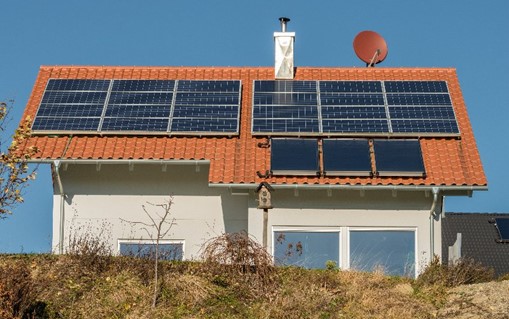Solar is a wise decision for many homeowners, as well as a considerable investment.
The modern world necessitates clean energy to ensure sustainability for generations to come. And homeowners designing their dream abodes or looking to retrofit solar power systems onto their existing houses are presented with the perfect opportunity to do so.
USA Clean Energy Association discusses how solar is the way forward, and what to consider for installation of solar for new builds and existing homes.

New Build Solar Considerations
Homeowners looking to build a solar-ready home need to think about a few technical points and guidelines to ensure their design is fit-for-purpose from the start.
The NREL report, Solar Ready: An Overview of Implementation Practices, defines the primary considerations. The most prevalent of which are as follows:
• Orientation and Shading
Placement is key when designing a solar-ready home, as is the roof angle. For instance, sloped roofs benefit from PV panels on the south-facing portion for optimal performance.
The smallest amount of shading can limit the output from solar systems, so homeowners must consider removing surrounding vegetation and situating their panels away from neighboring buildings.
• Roof Design
Before choosing a roofing material, builders must consider the weight of PV equipment — the roof must support it. The requirement tends to be three to six pounds per square foot.
Reducing the amount of non-solar equipment on the rooftop maximizes the space for PV systems. Plus, determining whether roof warranties include solar installation contract terms is vital.
• Zoning Laws
Local zoning laws or permit regulations may limit on-site solar developments. Thus, it needs accounting for during the planning phases.
• Solar Power System Design
Considering load requirements during the planning phase eliminates any future PV installation issues. Homeowners should decide whether their building needs uninterrupted power or energy storage to ensure the building design can accommodate future integrations.

Retrofitting Solar Considerations
New builds are stressful, but homeowners are given more opportunities to create a solar-ready design. Those with existing abodes must work with what they have by considering:
• Location and Roof Incline
For best results, homes must be in an adequate solar radiation area to ensure optimum sunlight coverage. Hopeful solar-havers should observe the sunlight distribution throughout the year to determine whether installing PV systems would be beneficial.
The roof should be inclined to provide an optimum angle of interaction between the surface of the panels and the sun’s rays.
• Home’s Energy Requirement
If owners want to go off-grid, solar can meet their building’s energy requirements. However, the PV solar system must be sufficiently configured to meet the demands. Hence, it’s a critical calculation before choosing the type of installation.
• Solar Type
There are two dominant solar techs — photovoltaic and thermal.
The former uses cells to create electricity from sunlight, whereas the latter utilizes sunlight to heat air or water.
Ideally, homeowners should choose the one that makes more financial sense. For instance, investing in thermal solar is advised for those living in areas where heating fuel is expensive compared to electricity.
Overall, solar technology is an excellent investment for many home builders and owners, provided they carefully consider their options.
